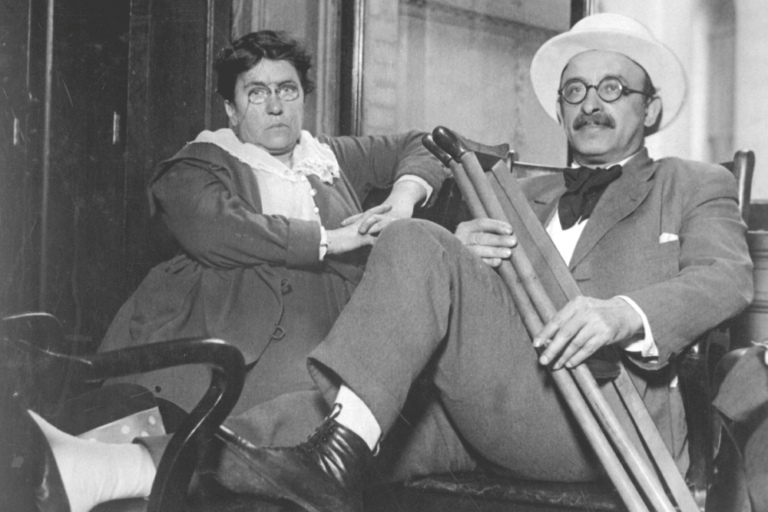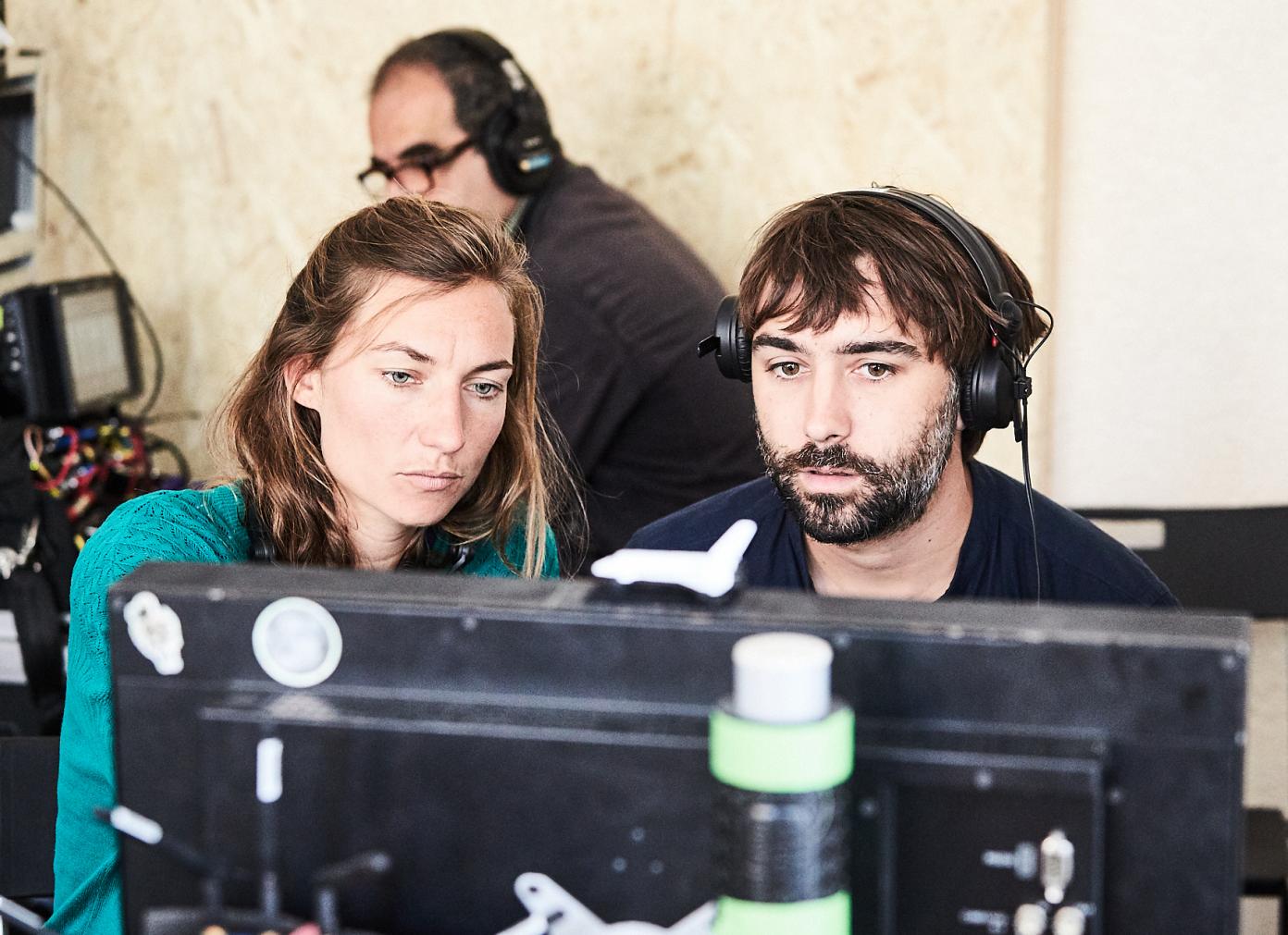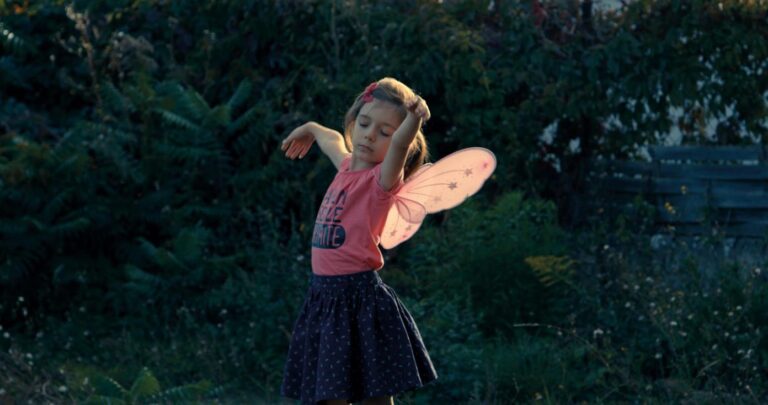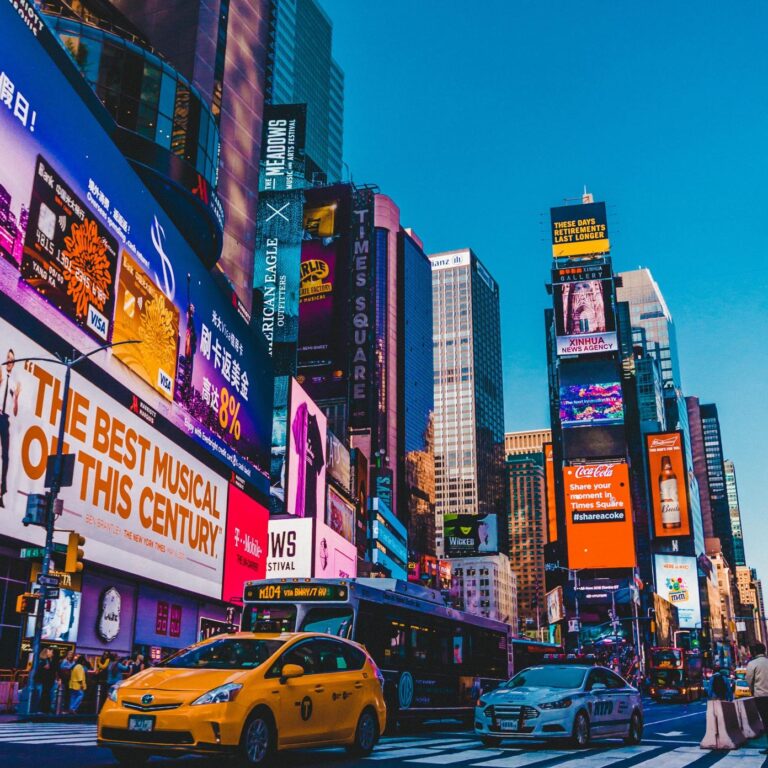
F. Liatard & J. Trouilh : “The film we’re imagining will shift the view towards a type of architecture that doesn’t get good press”

JP Moulet
By Raphaël Bourgois
Following “Gagarine,” their first film selected at the Cannes Film Festival in 2021, Fanny Liatard and Jérémy Trouilh continue to explore areas of urban relegation. In order to prepare their next feature film, the directing and screenwriting duo settled in Harlem to explore its population and history and conduct a research stay rich in human, societal, linguistic, and artistic discoveries.
Why did you want to spend three months in New York City and immerse yourself in Harlem?
JT: We finished our first film, Gagarine, two years ago. It was selected for the Cannes Film Festival, and although its screening was cancelled because of the Covid pandemic, it was successful. It’s even scheduled for release in the US in 2022. The past year of lockdown has helped us start new ventures, including a film we want to set in the US—it’s actually an idea we’ve had for several years. We came up with the idea for Still I Rise before Gagarine. It’s more sci-fi than Gagarine was, but with a strong social footing. We’ve always envisioned the film in English. We can’t really say much more, as the project is still in its early stages, but it features that same dreamy feel, combined with explorations of the way humans organize themselves to live together and draw strength from their community. After fantasizing about the project for a long time, we really needed to get out in the field in order to suffuse our fiction with reality. And that’s what the Villa Albertine residency helped us do for three full months in Harlem—it gave us the chance to live in a neighborhood that fascinates us, and to meet people there. In turn, that helped us study, in another location, other subjects we’ve been exploring for a long time, such as architecture, urban planning, and how a district can be steeped in socio-cultural, historical, and economical complexities—and how that creates challenges for the inhabitants of those districts. All this will influence our characters and screenwriting.
For Gagarine, you did a lot of work alongside local inhabitants and associations. Were you able to do the same in New York City?
FL: Our approach is the same, except that we’re obviously not American citizens, and we only spent three months in New York City, whereas we spent several years in Ivry-sur-Seine. But the idea was to immerse ourselves in Harlem, meet people, and explore architecture and geography that would inform our screenwriting. As soon as we arrived, we contacted various local organizations and offered to do video workshops, like we usually do. We try to enter into dialogue with the people we meet. That’s how we draw inspiration.
There was a lot of talk about the ‘magic realism’ of Gagarine. Are you pursuing this hybrid vein of documentary and science fiction?
FL: When we were nineteen, we each spent a year in South America—me in Peru, Jérémy in Columbia. That’s where this avowed reference to magic realism comes from—it describes our offbeat approach, our idiosyncratic slant on the tangible reality that surrounds us on a cultural, economic, and social level. To answer your question, I do think we’ll keep this same spirit in our new project. The film will be pure fiction, but it’ll feature our documentary approach, since we spent time with people in real settings during the writing process. Another aspect that adds realism to the magic of our dreamy—even sci-fi—approach is our exploration of archive material, as we did for Gagarine, for grasping the history of the area we explore.
You mention encounters you had during your residence. Did some of those leave a strong impression on you?
FL: There were several! We enjoyed university meet-ups with historians of Harlem and the communities that make up the district. We quickly took an interest in social housing, just because you see it everywhere, right in the middle of New York City. So Still I Rise is a natural continuation of our last film, since the action unfolds in a housing project, and we focused on the way social housing and its inhabitants are incorporated into a city. We met a French woman, Dorothée Pierrard from the NGO VISIONS/Services for the Blind and Visually Impaired, who helps blind and visually impaired people become more familiar with the city. Through her, we were able to go inside people’s homes, discover their interiors, and meet people who became sources of inspiration for us. On a different level, we were able to attend a Community Board meeting that works to reduce violence in an area of Harlem where opposition between two housing projects generates a lot of crime. We also researched the term “Community” to see what it really means, what it means to people.
JT: To understand this term, we were helped by many organizations, the Maysles Documentary Center in Harlem and the Bronx Documentary Center in particular, who put us in touch with some of the youngsters taking part in their workshops. We were able to show them our films. The Bronx Documentary Center is a wonderful place that’s been part of its neighborhood for decades. It does a brilliant job for youngsters, training them in photography and documentary-making. It also documents the things that are dear to them, through interviews, texts and photos. It was a goldmine for us—all those accounts helped us dive into the lives and secret stories of youngsters who revealed themselves through their words and images. It was beautiful. The center also allowed us to take part in one of their year-long programs, where they mentor youngsters who want to become documentary-makers. It was amazing. For example, we met a youngster from Harlem who was making a very moving film about a single mother and her six children whom he’s been following for several years. He gave them phones so they could document their private lives themselves. We walked with him around Harlem as it is for him, discovering his day-to-day life and work as a cook in a soup kitchen. So the Bronx Documentary Center was one of those places that really inspired us through its work at the neighborhood level, and at the community level. New York City’s districts are full of these places rooted in a story, in the present-day lives of the people who live there, to whom they give a voice. We could also mention UnionDocs in Brooklyn. So there were two main areas that stood out in our work here: a physical exploration of the urban environments and a human exploration of those who inhabit them. What we took from this experience was sometimes inexpressible—a way of talking and living, emotions that surface, a way of being in love that’s perhaps a little different, a way of arguing, of creating a language. These organizations were so precious in helping us get closer to people and capture all these aspects.
What role do images—documentary images—play in this process of community-making?
JT: These institutes record, through videos, voices that would otherwise remain unheard, helping build up a collective memory. These documents give value to what we reveal, and give pride to the community. The organizations that make this work possible are bridge-builders. Through them, we were able to talk to people we would never have been able to meet otherwise, hear their stories if they wanted to share them with us, and follow them in fragments of their everyday lives. What’s more, we were lucky enough to visit schools—public schools in Harlem; private schools in the swankier Upper East Side. These schools were very diverse, but they had a lot in common, as we saw in workshops. We showed our short films, and discussions quickly followed—they soon turned away from film, to politics and society, even among sixth-graders. We were impressed by the open-mindedness of the pupils we met there, by their ease in expressing complex thoughts orally on topics that touched on inclusion, respect for differences, the invisible borders that run through these districts, and the students’ pride in coming from such-and-such a neighborhood.
FL: That was also interesting to us because the film’s main character is a girl, aged between 17 and 22. Whether through an Upper East Side girls’ school or at the Bronx Documentary Center, we met girls like our main character. We were able to speak with them about their perspective on life, simply listen to their way of expressing themselves and their language when they talk with other girls, and see what they’re concerned about. These details are vital to building up our characters. There’s no other way to collect such details.
This issue of language is central for you. How do you appreciate a language in a foreign country, where you inevitably have less grasp of its subtleties?
FL: We loved walking around Harlem, strolling down the streets around where we were staying, and going to the supermarket so we could hear people talk (and sometimes sing). It’s true, we’ve still got a lot to do to fully grasp this language, but we’ll be working alongside an American co-screenwriter, which takes the pressure off us for writing the dialogues in English. Regarding this issue of language, New York City brings together countless different nationalities so it’s very rich, and we want to feature this powerful abundance in our film.
JT: It was also beautiful to see people talking with each other in intimate settings, and observe how they communicate. We met a rather elderly Afro-American, for instance, a blind Vietnam veteran who lived in a housing project in Harlem, and an equally elderly Asian woman, who had grown up in Chinatown and lived in the same building. She’d help him each time he’d go out. So we went to this man’s apartment, and he led us down the corridors to this woman’s home, a few floors below. He had his white cane. He knew the place well and constantly hummed a song, like he was trying to situate himself using the echo. So we went down through this somewhat dilapidated housing project, arrived at the home of this lady, and the pair started arguing! Yet the communication between them was wonderful. It was volatile, but also full of affection. These two lonely souls had known each other for ten years. She felt strongly about acting as a guide for him, and probably saw outside assistance as competition to their exclusive relationship. It’d be tough to express all that, but in our fiction screenwriting it’s this kind of encounter that makes the dialogues and interactions between our characters more authentic.
Anyone who goes to New York City feels like they’re in the middle of a film set, one they’ve seen countless times on the big screen. What cinematographic approach to the city did you want to adopt?
FL: We found it enchanting to explore the city, a place we didn’t really know before our residency. We naturally took an interest in the architecture, even though it had been filmed countless times before. But the neighborhoods we were interested in have seldom been seen on film. Plus, our focus will be on people, as in Gagarine. Although we had a notion of picturing a housing project as a spaceship, the most important aspect of our narrative was the community of people who made the site a living place. That’s the driving force behind our screenwriting—listening to people’s stories and feelings about the place.
JT: As in Gagarine, the film we’re imagining will shift the view towards architecture and settings that don’t get a good press. But we went to these places with a lot of humility, because we were dealing with a culture that wasn’t ours. And we know how important it is to call into question your own perspective when you turn up somewhere. In fact, the residence helped us question our own prejudices.
You talk about showing architecture and areas that have rarely been seen, but don’t you risk endowing them with a beauty they don’t actually have in the eyes of their inhabitants who, as you say, are more attached to people and their community than to their buildings? How can you avoid aestheticizing things?
JT: I don’t think our images are aestheticized, in the sense that they’re supported by our critical thinking as filmmakers. Gagarine was a mix of realism and dream-like sequences, and we decided that the film would adopt the main character’s point of view. As a result, in the beginning, the film is naturalistic, as Youri feels grounded in his daily life. But as people leave and he finds himself isolated, he takes refuge in his dreams. The filmmaking adjusts to this introspective shift that gradually transforms his environment. That’s when the lighting and camera movements veer towards science fiction. Perhaps these images did aestheticize his surroundings. But that’s somewhat irrelevant, because they expressed our character’s perspective. We’ll be adopting the same approach in our new film. The way we film New York City or the neighborhood where we’ll be based will be influenced by the character and the way she develops.
The big difference between New York City and what you’ve explored in France is that the social housing, the projects, are right in the heart of the city. How are you taking this difference into account?
FL: You can’t deny it—though the housing projects are in the city center, there are strict borders in people’s views. Inhabitants of Harlem and the Bronx have internalized these frontiers—they admitted to us they don’t feel comfortable in Midtown or Downtown Manhattan. Some of the girls we met told us their friends’ parents don’t let them come to their homes, which is pretty brutal even if you understand the concerns and don’t deny the reality of crime and gangs. There’s clearly a stigma in the US about these districts that are incorporated into the city center, like there is about the suburban housing projects outside France’s big cities. Still, I get the impression that in the US there are bridges, for example in schools, where we noticed a certain diversity.
JT: As for aesthetics, we were surprised the housing projects all looked the same—tall red-brick towers in a cross- or T-shape layout. They’re always easy to spot. They’re isolated in a way, because they often take up a block and stand out for their appearance. There are more of them in some parts of the city, like along the East River where pretty much all you see are housing projects.
FL: And whereas in France we tear down housing projects for urban renewal and gentrification, pushing the poorest further and further out of cities, in New York City we visited a housing project that had been fully converted into luxury apartments. The gentrification process goes so quickly, it even affects housing projects. Near the Williamsburg Bridge, we saw a project where a glass tower had been built in the middle of a playground—an ultramodern apartment building eating up the public space of the poorest people. It’s staggering.
JT: I’d like to add one last point. Unlike in France, individual identities aren’t shaped as much by the project you come from. In New York City, there’s more of a neighborhood logic. In our experience for Gagarine, it’d often be said that Gag’—as the housing complex was affectionately called—was perhaps the main source of identity for many of its inhabitants. In New York City, whether you come from the Martin Luther King, Jr. Houses or the Frederick Douglass Houses might have some importance, but I feel neighborhood identities are so strong that they outshine all else in a positive way. Your identity doesn’t necessarily derive from a low-income project but from a neighborhood that can lay claim to a whole history, culture, and influence. This reality will certainly inform our screenwriting.

